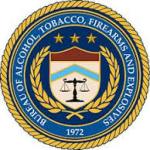I bought my first real gun in Florida when I was 12 years old. A beautiful Smith & Wesson 38. Got it in a flea market somewhere on Highway 441. Owned that gun for about 30 minutes until my Uncle Nat took it away from me and probably hocked it the next day. He was right. What the hell was a twelve-year old kid doing walking around with a gun?
This purchase began a life-long addiction to guns which continues to this day. Or at least until yesterday, when I walked into Dave’s Gun Shop and bought a Star Model 30M, a heavy, all-steel pistol that holds 15 rounds. Why did I buy the gun? Because I wanted to buy a gun. Why does my wife buy shoes? Because she likes shoes.
If I were a typical gun guy, I would tell you that I bought this gun because it’s good for self-defense. I don’t often, if ever, carry a gun. Guns are lying around the house but none are close enough to be grabbed up if an intruder were to suddenly burst through the door, but I know that owning a gun makes me safer, which is why I bought the gun.
Actually, that’s not true. I didn’t go into a gun shop yesterday because I was thinking about my personal safety. I didn’t walk up to the counter, take one look at that Star pistol and decide that this gun would protect me from crime. I certainly didn’t for one second imagine that buying that gun would somehow make me ‘free.’ I bought the gun because I wanted to buy a gun.
This may have been the third time I owned this gun. I had a Star 30M back in the mid-90’s; sold it to some guy in my gun shop who then sold it back because he needed a set of tires for his truck; sold it later to another guy who probably at some point traded it at Dave’s shop where it was sitting when I made it mine. You don’t see a Star 30M all that often, and it’s not as if the gun, or any gun for that matter, ever wears out. If this gun had been picked up at a crime scene instead of being sold to me, the ATF trace would show that the gun went into private hands somewhere around 1995. But it went into private hands and then back into an FFL inventory at least two more times over the intervening twenty years. So much for the value of ATF traces and as well as the nonsensical discussions about Time to Crime.
On the NRA website, Wayne LaPierre tells the NRA membership that “nothing would make us more vulnerable to generations of suffering and slaughter than the destruction of our 2nd Amendment.” There’s about as much reality behind this statement as the idea that I bought that Star pistol to protect myself from crime. I live in a White, middle class neighborhood – if anyone ever tried to break into my house it would probably be my drunk neighbor who thought he had come home and forgot his keys.
I have personally owned, bought and sold, probably 500 guns over the course of my lifetime, and I can say that in all those transactions going back to 1956, I never once asked myself why I needed any particular gun. But if someone were to ask me why I bought and sold all those guns, I might rattle off something about crime, or terrorism, or my Constitutional ‘rights.’ After all, I have to come up with some kind of answer, and it’s not as if people who don’t like guns can offer me a clue.
In crafting sensible solutions to gun violence, my friends in the GVP community have to understand that any new law will force me to somehow change this impulsive habit. And when was the last time you stayed on that low carbs diet?



Recent Comments